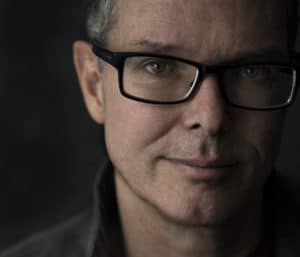By Frans Stiene

Within the Reiki precepts we find these two phrases:
Do not anger
Do not worry
Often we do not understand these precepts completely. We might think that we have to suppress our anger and worry, but that is not what they are saying at all. When we suppress our anger and worry it will come out one day in one big explosion. And that is not very healing at all.
So what does do not anger and worry really mean? What was Mikao Usui trying to point out to his students? To really know this we have to look at what Mikao Usui was basing his teachings upon, Japanese Buddhist spiritual practices like Zen, for example.
Let’s take a closer look at what Zen masters say about the words “no” and “not.”
“”Not” and “non-” can be understood to be synonymous with liberation from the ego-self.” – The Essence of Zen, The Teachings of Sekkei Harada
The word synonymous means having the same meaning or connotation. Thus what Sekkei Harada is saying is that the words “not” and “non” have the same meaning as remembering our true Self, our essence, liberation of the ego-self.
When we rediscover our true Self we realize that there is no “I” to be found. When there is no “I” to be found, then who is there to be angry or worried?
Anger and worry also need a subject and object relationship to sustain them. I am angry with this person. I am worried about that situation. But when the subject “I” is not found, then the object “they/this/that” also will not be there. Neither one can be found. Of course this doesn’t mean that we can not see ourselves or other people; of course we can. But in that state of true Self we do not cling to the “I” and therefore automatically can let go of the “they” – no clinging to either subject or object.
And through not clinging to subject and object, anger and worry will have no hold on us. They will just dissipate all by themselves, arising just like a wave and at the same time dissipating like a wave.
This is the deeper meaning of Mikao Usui’s precepts of do not anger and do not worry. Mikao Usui was pointing out that we have to remember our true Self.
We also can clearly see this pointing out of the true Self in the symbols and mantras within the system of Reiki.
“The negative term “no” or “not” implies transcendence of conceptual thinking coming from your human mind.” – The Light That Shines Through Infinity by Dainin Katagiri
Dainin Katagiri is saying exactly the same thing: “no” and “not” transcend our confused conceptual thinking of “I” and “you”, the dualistic concept of our confused human mind. To “not” anger or worry, to transcend the states of anger and worry, points to the way of thinking with the mind of our true Self.
Mikao Usui pointed this out, for example, with the mantra/symbol hon sha ze sho nen 本者是正念 which translates as my original nature is right mind.
What is this original nature? It is our true Self. What is right mind? It is the mind of non-duality, the mind which has transcended conceptual thinking.
Therefore, the precepts as taught within the system of Reiki point to our true Self, our original nature which is right mind and the mind of our true Self, which is non-duality. The precepts tell us that right now, even if we are not aware of it, our true Self is always there. Our ever-present true Self means that in that state of mind there is no anger and worry at all because it can not take hold.
This is not easy to understand intellectually. For this we have to internalize the symbols and mantras as taught within the system of Reiki. We have to practice the traditional Japanese Reiki meditation practices like joshin kokyu ho, we have to see hands on/off healing as an act of meditation, we have to meditate with and/or chant the precepts, and we have to see the ritual of reiju/attunement/initiation not as something external that we “do” but as something internal that we are.
To simplify the precepts of do not anger and do not worry (for example, “If I keep practicing, I won’t get angry or worried any more!”) is to miss their deeper meaning. If we keep practicing, and continue to deepen our understanding of our practice, we will find that deeper meaning: rediscovering who we truly are.

